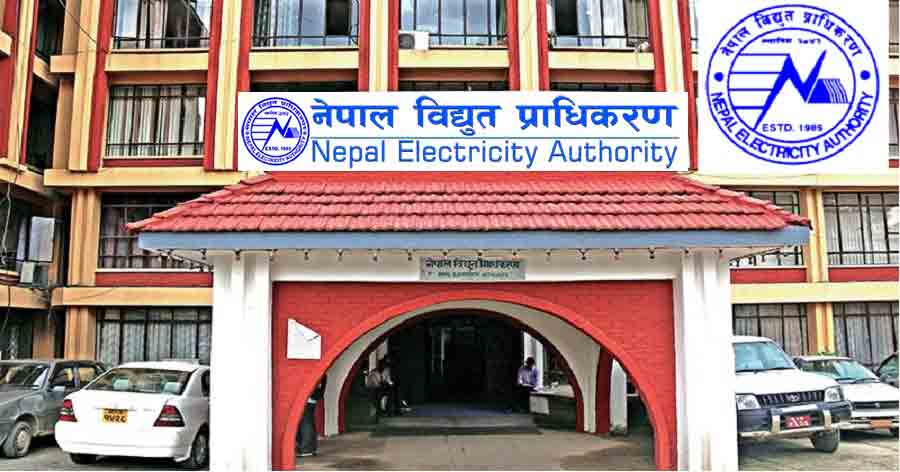
The Nepal Electricity Authority (NEA) has set a target of increasing the transmission capacity to 3600 MW in the next five years. The target is to increase the transmission capacity from 2,000 MW to 1600 MW to 3600 MW, said Executive Director Kulman Ghising.
Presenting the report at the 36th Anniversary Festival on Tuesday, Executive Director Ghising said that the first goal is to become self-reliant on electricity by increasing the transmission capacity.
NEA has set a target to generate 1600 MW of electricity within the next five years after the Upper Tamakoshi with a capacity of 456 MW started generating electricity at full capacity. He said that an agreement has been reached to sell electricity in the Indian market by making full use of electricity to become self-reliant in electricity.
Minister for Energy, Water Resources and Irrigation Pampha Bhusal said that NEA aims to invest in large reservoir projects to become self-reliant in electricity. He directed the government to focus on production in collaboration with the private sector and the NEA to expand its effective service to the service recipients and make it an exemplary institution in the country.
Currently, 140 MW Tanahu, 111 MW Rasuwagadi, 102 MW Madhyabhotekoshi, 40 MW Rahughat and other projects are under construction. According to NEA, the feasibility study includes the Upper Arun of 1060 MW, Dudhkoshi Reservoir of 635 MW, Tamakoshi Five of 95 MW and Andhikhola Hydropower Project of 180 MW. NEA has stated that the broadcasting capacity will be increased after the completion of these projects.
Last year, the national transmission line was extended to 74 districts including Kalikot and Jumla, while the aim is to extend the national transmission line to all 77 districts including Humla and Dolpa by 2080 BS, said Deputy Director Dharmaraj Neupane. Neupane informed that the number of customers has increased to 5 million 78 thousand in 2076 BS. At present, 90 percent of the people are supplied through central electricity transmission, he said.
To make the distribution line strong and effective: The Nepal Electricity Authority (NEA) has set the main goal of making the power distribution line strong and effective. Speaking on the occasion of the 36th anniversary of NEA, Executive Director Ghising said that even after the end of load shedding, the problem of frequent power cuts has increased the dissatisfaction of the customers and the aim is to improve it immediately.
NEA has already expanded the underground distribution line in Ratna Park-Maharajgunj area and has started a plan to connect underground lines and smart meters in the remaining seven major cities of the state. NEA has stated that it has started preparations to expand the 132 KV transmission line by centralizing the demand and supply of the major cities. Plans have been made to manage sustainable poles and wires in the long-distance central transmission line. Ghising said that NEA has taken power supply as its responsibility to fulfill the goal of building a smart city set by the three levels of government.
Net profit Rs 3.5 billion: NEA's profit has decreased from the previous years and is currently at Rs 3.5 billion, said Executive Director Kulman Ghising. Last year, NEA earned Rs 80.50 billion, of which Rs 71 billion came from electricity sales. Ghising informed that the main goal is to invest the profit in big projects and earn more profit.
The history of power generation in Nepal started in 1968 with the generation of 500 kV capacity Pharping Hydropower. The NEA was transformed from the Department of Electricity on September 20, 2006. Nepal, which was generating only 144 MW of electricity at that time, now has a capacity of 2,000 MW with the establishment of NEA. Among the exemplary projects, NEA has constructed reservoir projects including Kulekhani and Masyangdi hydropower projects. Although many sources including solar, wind, coal and water are used for power generation, NEA has stated that electricity is enough to support the country's economy.
The private sector was included in the power sector after the government brought the Electricity Act in 2049 BS. At present, NEA has 600 MW, 475 MW from NEA subsidiaries and 825 MW from private companies. NEA has stated that it has to import electricity from India for 12 months as the supply is not the same as only one third of the electricity is generated in winter even though the installed capacity is more in private sector.
Ghising said that the first goal of NEA is to provide excellent service by improving the system from production to distribution. NEA plans to consume the electricity generated in the country and sell the rest in the international market. It has been stated that electricity consumption will be increased up to the stove to reduce fuel consumption by conducting public awareness programs to increase electricity consumption.
NEA has stated that it will end load shedding by making Nepal self-reliant on electricity from indigenous products. He said that the bitter reality of ending load shedding by importing electricity from India will be removed immediately. He said that the Upper Tamakoshi Power Project will start generating electricity at full capacity from all the six machines and generate 456 MW of electricity.




